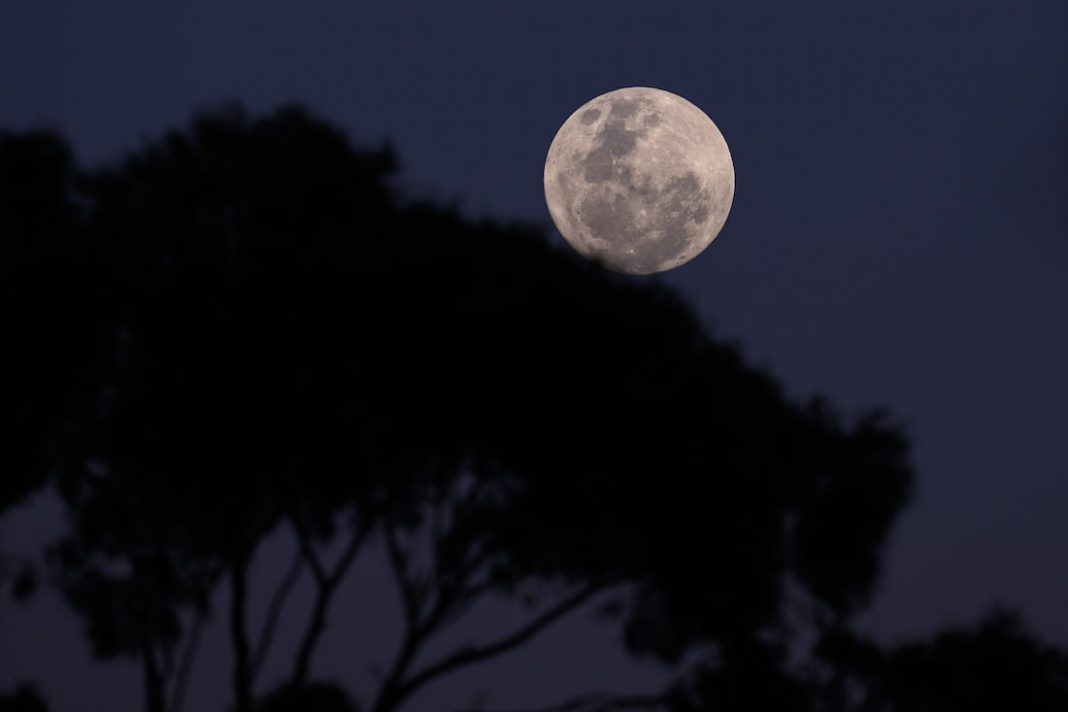Skygazers across the country have been treated to a spectacular supermoon overnight, the first of two supermoons to be seen this month.
A supermoon is when the moon is at its closest approach to Earth on its elliptical orbit.
Its furthest point is 405,696 kilometres away, with the supermoon a mere 357,344 kilometres away.
Astronomer Fred Watson told AAP that while humans can’t tell the difference between the distance of the moon with the naked eye, it does appear much brighter.
“The supermoon is 14 per cent bigger than the moon is usually, when it’s at its closest to earth and its full,” he said on Wednesday.
“You don’t notice that with the naked eye. But it is significantly brighter, about 30 per cent brighter than when its at its apogee, or its furthest point.”
“Last night, it looked terrific in the sky, it was very bright.”
While supermoons happen with regularity, a blue moon is also due later this month.
A blue moon is when two full moon occur in one month. They are much rarer, hence the saying, “Once in a blue moon”.
Professor Watson said while there are no major astronomical markers or official meanings to a blue moon, they always captures people’s interest and attention.
“In terms of what it means to people, it’s much more in tune with the popular idea of the sky, it gets people thinking about the solar system,” he said.
“It’s a neat, quirky way of getting people talking about the moon.”
The supermoon due on August 31 will be the month’s second full moon, making it a super blue moon.
Prof Watson said the event is a much rarer occurrence, with the last super blue moon seen in January 2018.
Keen astronomers will be hoping for clear skies in January 2037, when the next one is due.



